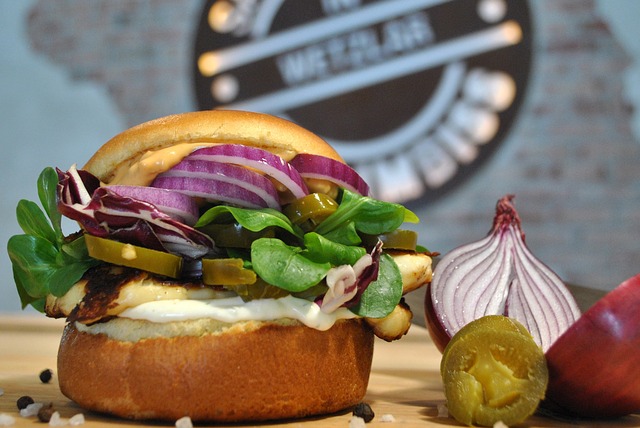2022 Global Restaurant Trends Forecast
The world has faced nearly two years of disruption and uncertainty, cautious optimism and unexpected challenges. As we enter another year, the pandemic continues to loom large, informing operations, planning, decision-making and forecasting for operators and suppliers alike.
And yet, with so much uncertainty still in the air, it finally seems as though the steady recovery many had expected to make 2021 the bounce-back year may actually have a good chance at materializing in 2022. Vaccinations are rolling out; people are continuing to return to offices, schools and global travel; and other upbeat developments are bringing new optimism and opportunity. But foundational issues around labor, supply disruption and inflation make it hard to peer into what’s to come next month, let alone next year.
With this as the industry’s backdrop for the coming year, please read ahead for Technomic’s take on six major trends poised to make a global impact on foodservice in 2022, plus some up-and-comers likely to break out.
Eggs are the restaurant darling of 2022. Egg sandwiches are having a moment in many parts of the world and will soon dethrone the chicken sandwich as the next must-have-on-my-menu restaurant item.
Operators will showcase eggs in more all-day sandwiches and handheld offerings, complementing them with premium ingredients, housemade sauces and elevated preparation methods. Eggs are perfectly suited for a post-pandemic slot in the limelight—simple, universal, craveable, adaptable, suggestive of new beginnings. Eggs also create opportunity for punny concepts and quirky branding, bringing some fun back to the dining experience.
The crisis may have prompted some chains to cut back on breakfast over the past year, but the daypart is poised for a big bounce back in 2022.
With recovery scenarios on the horizon, consumers are settling into a less-disruptive reality, one in which some are fully home-based, while others head back to the workplace. And—crucially—kids are going back to school campuses. For many, sourcing a morning meal from a restaurant is once again a part of the routine.
Expect chains to employ subscription deals, multiperson bundles, product innovation and amped-up marketing to capture morning traffic and establish loyalty. We’ll also see the return of 24/7 breakfast offerings as well as new competition from casual dining in the form of morning-only virtual brands and later-day breakfast options. And count on at least one unexpected star to emerge on the morning menu: the creative breakfast side. Something small that excites without being too complicated. Bacon-and-maple french fries anyone?
Make no mistake: 2022 is all about labor, supply disruption and inflation. This goes for restaurants, bars and other operators across the food and beverage ecosystem.
What will be the dominant issues of the year will inform nearly every other aspect of the foodservice industry—from menu execution and product mix to marketing, capex and beyond.
Additionally, large chains may find that they have a smaller pool of motivated restaurant franchisees, which could impact expansion targets. While these issues will continue making headlines across global markets, they will also spur lasting innovations that will ultimately put foodservice back on the path to long-term prosperity.
It was a great run of media exposure for the ghost kitchen model. But all good things must come to an end. Delivery kitchens have had their 15 minutes of restaurant-trend fame and will garner less attention in 2022.
Not that they’re going away—not by a long shot. The dark kitchen model, like once-hyped formats such as food trucks, food halls and fast-casual spinoffs, no doubt will retain a permanent place in the industry. But that will be a return from a pandemic high to a pre-crisis place in the market. And that’s not bad given the already-robust attention ghost kitchens were receiving before the pandemic put the model on too lofty a mantle.

If your dessert is not actively assisting with your life goals, it’s not the dessert you’ll want in 2022. Because this will be the year that it’s all about functionality on the dessert list.
Think skin care-enhanced ice creams, immunity-boosting hand pies, mood-modifying macarons and so on. A key trend in recent years—and certainly amid the pandemic—has been the expansion of the functional concept to more types of foods and beverages, and this will start to play out in the dessert category to a larger extent in the coming year.
Indies have been hurt bad and global players are looming as a result of the crisis, but there is also new white space for innovators to grow, and quickly. Keep close tabs on emerging local restaurant brands—these are poised to be strong competition for global restaurants and new customers for global suppliers.
While the pandemic created an expansion environment largely friendly to leading global chains, it also cleared a path for players that are more local, nimble and positioned around attributes such as healthfulness, sustainability and technology.

Here are the other flavors and dishes that will inform menu development in 2022.
As we have noted in recent years, halloumi is primed for the center stage as a craveable, vegetarian-friendly alternative to meat. Next year, operators will menu mutabal, the lesser-known sibling of baba ghanoush, especially at fast casuals. Plant-based egg will make its mark among the many animal protein alternatives already flooding the market. With the killer combo of craveability and gluten-freeness, Brazilian cheese bread—pao de queijo—will gain traction well beyond its homeland. Soups and stews will get a fresh look, with comforting, homey recipes from all over the world and a delivery-friendly format. Tlayudas deserve some time in the spotlight, and the Mexican flatbreads will start getting it in 2022.
Finally, avocado coffee will expand out of Indonesia and other parts of Asia into global markets.

